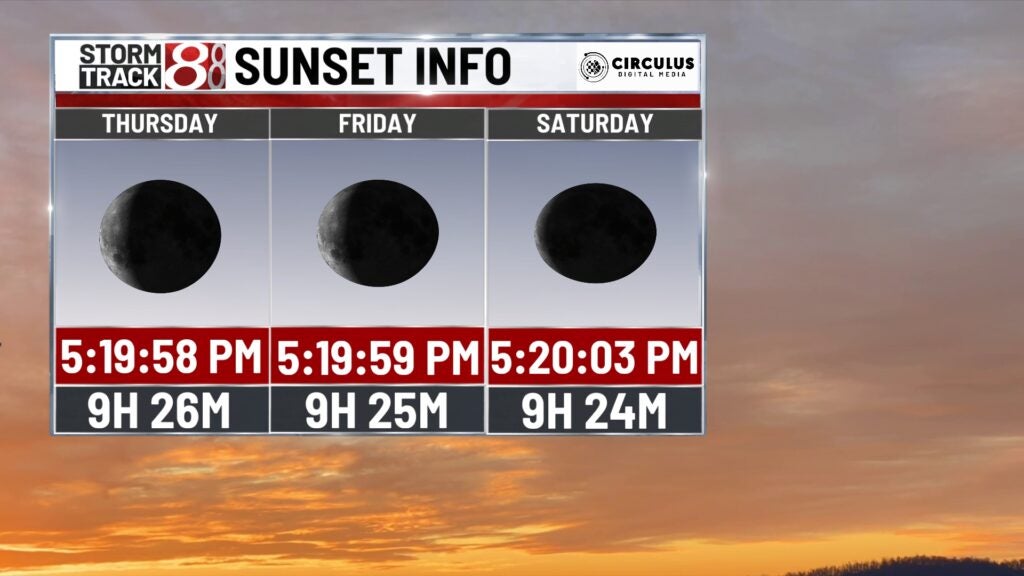Indianapolis hits its earliest sunset, but still loses morning daylight
INDIANAPOLIS (WISH) — As winter blankets the Northern Hemisphere, the ever-changing rhythm of daylight hours is often a topic of conversation. Realizations that days slowly but surely get shorter as the official start to winter draws closer. And while we will still loose daylight every day until the winter solstice, at least we’re actually in an odd part of the year where the time of sunset slowly starts to get pushed back to later and later times. All of the hours of daylight lost till the Solstice is in the morning hours.
Explainer

The dance of Earth and Sun lies at the heart of this phenomenon. Picture the Earth as a spinning top gracefully tilting on its axis. This tilt, known as axial tilt, is responsible for the changing seasons. As we approach the winter solstice, which typically falls on December 21st, the Northern Hemisphere leans farthest away from the Sun, causing sunlight to spread thinly across the land.
In the weeks leading up to the solstice, the days grow shorter, leaving us with less precious daylight, but here’s where the enchantment lies: Sunrise and sunset times do not mirror each other during this period. While sunrise stubbornly becomes later, sunset seems to pause in its journey towards earliness, but why?
THE SCIENCE
The answer lies in the complex interplay between Earth’s tilt and its elliptical orbit around the Sun. Imagine the Sun’s path across the sky as an arc. As we draw closer to the solstice, this arc gradually lowers, resulting in shorter daylight hours. However, the rate at which the sun’s arc descends slows down, leading to a temporary halt in the progression of earlier sunsets. This pause occurs because the tilt of Earth’s axis, combined with its elliptical orbit, creates a delicate balance between sunlight angles, and the timing of sunset.

It’s important to note that the precise timings of sunrise and sunset vary depending on your location on Earth. Latitude plays a crucial role, as regions closer to the North Pole experience more drastic changes in daylight hours compared to areas closer to the equator.
